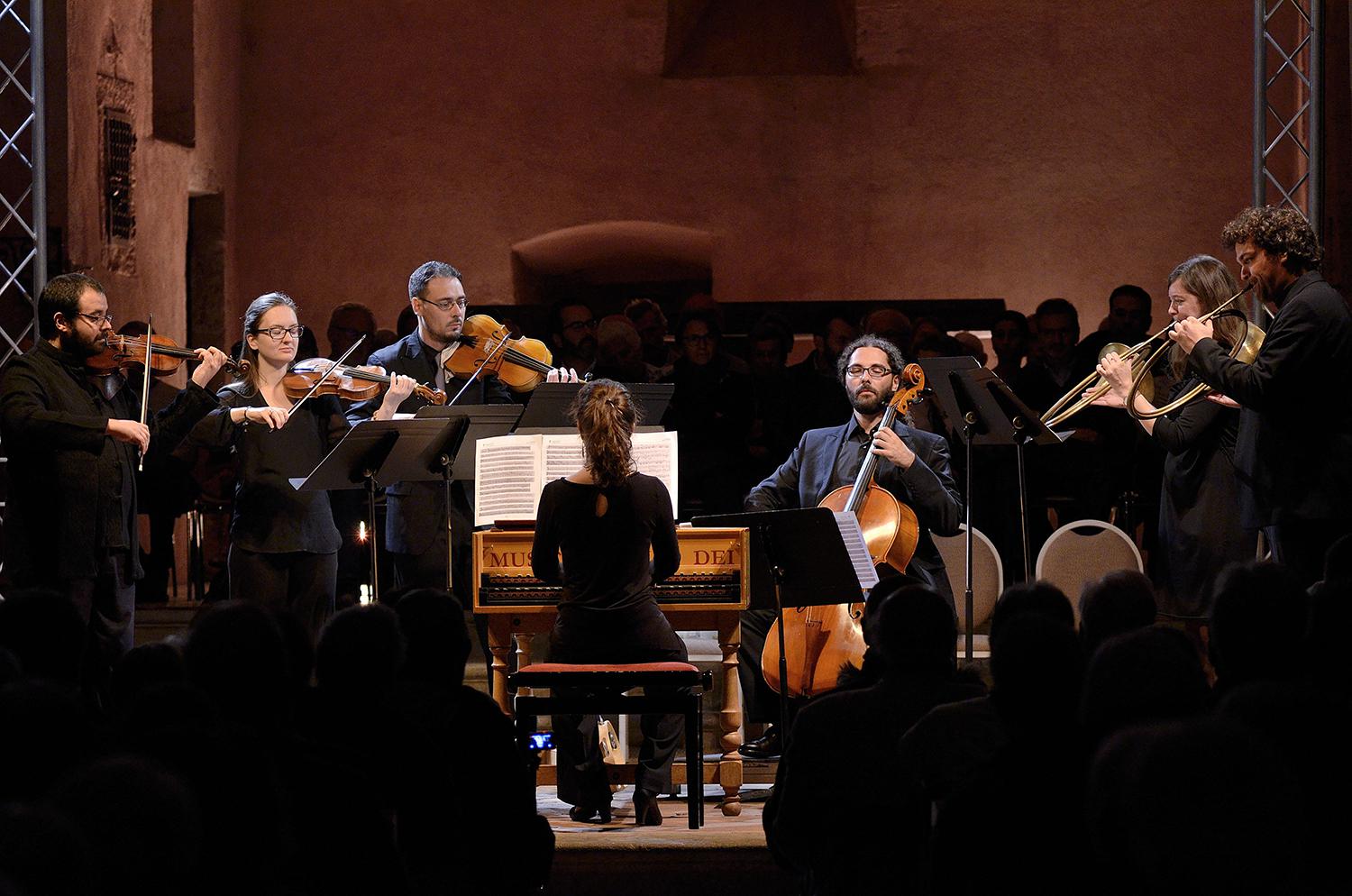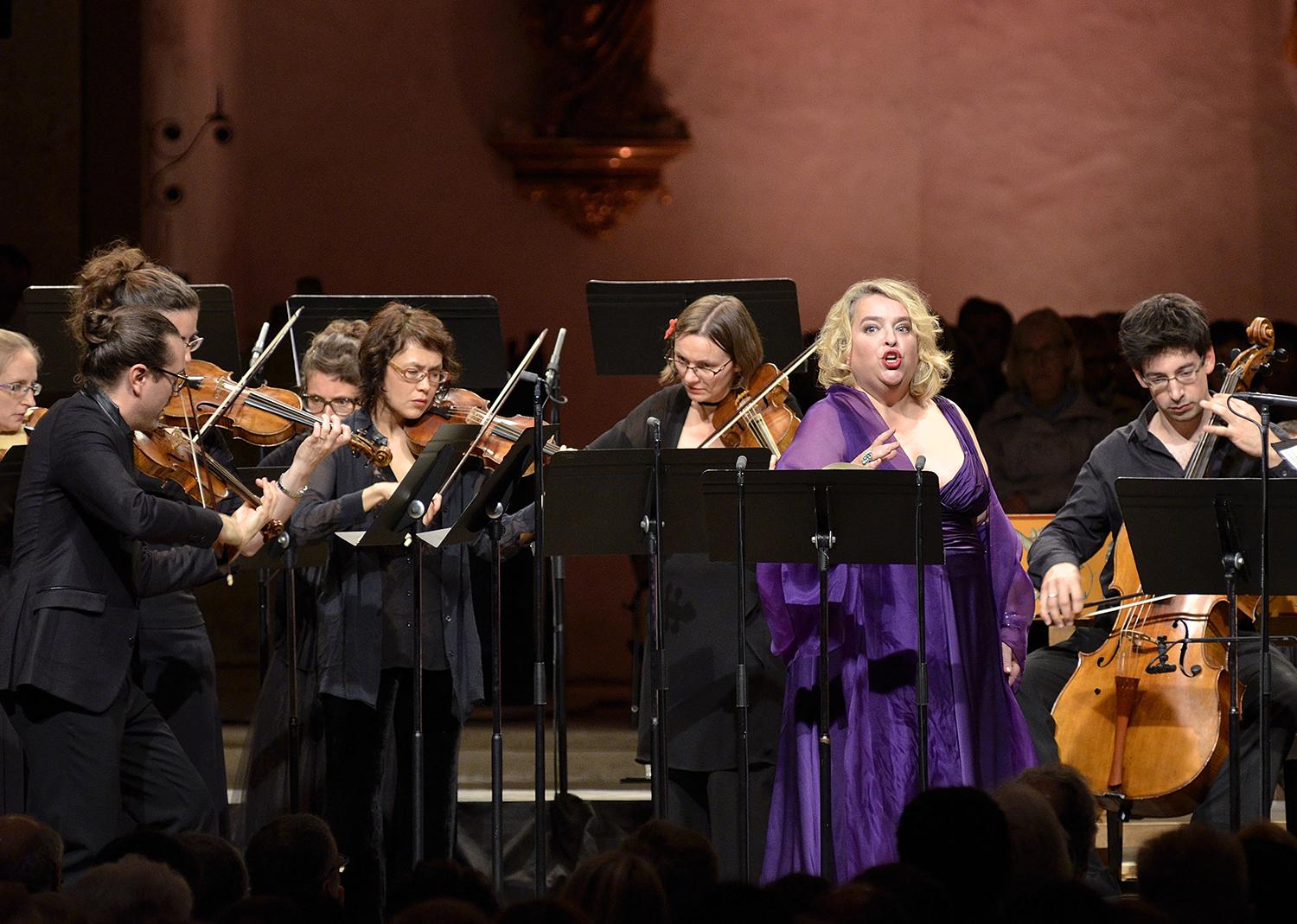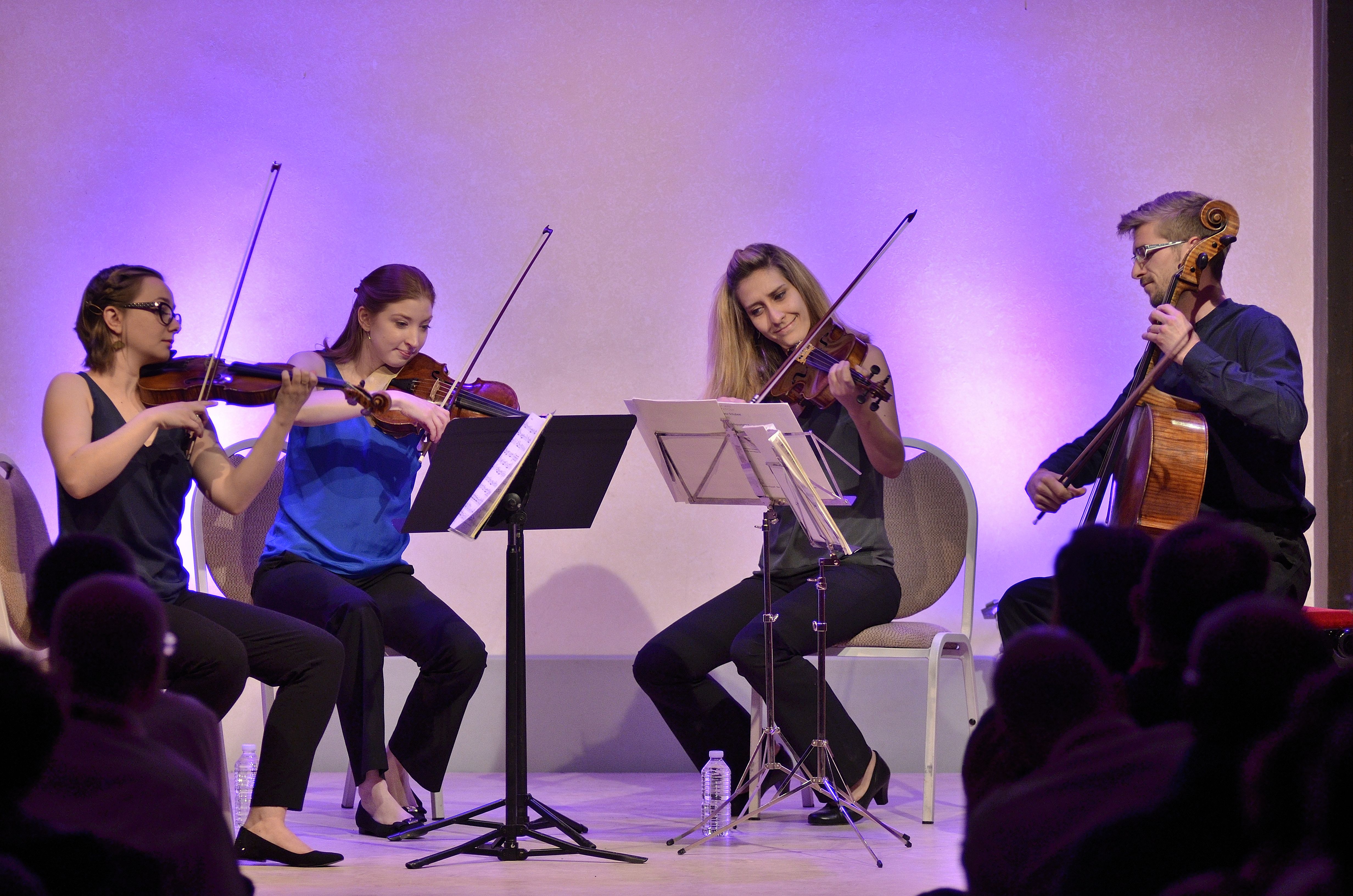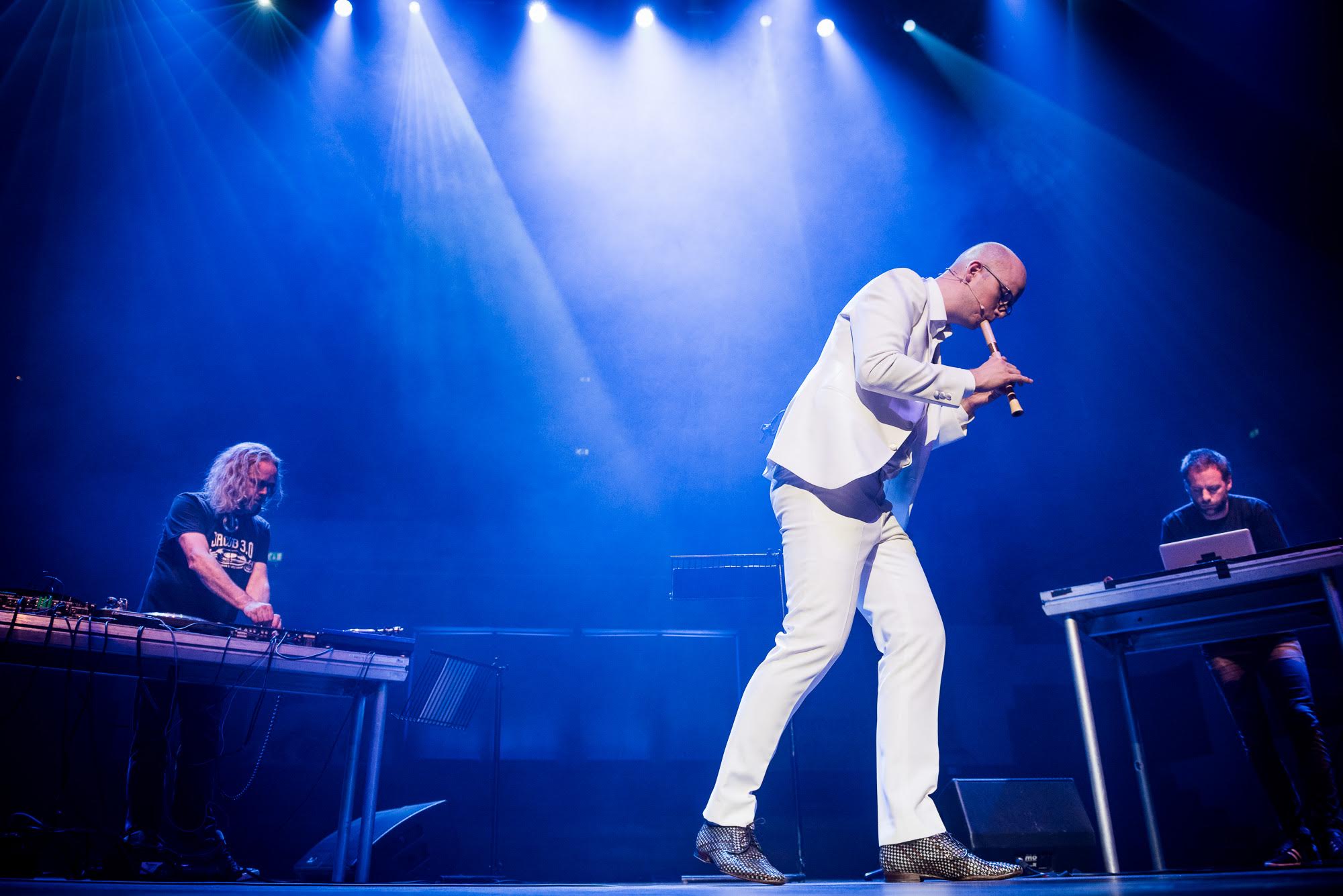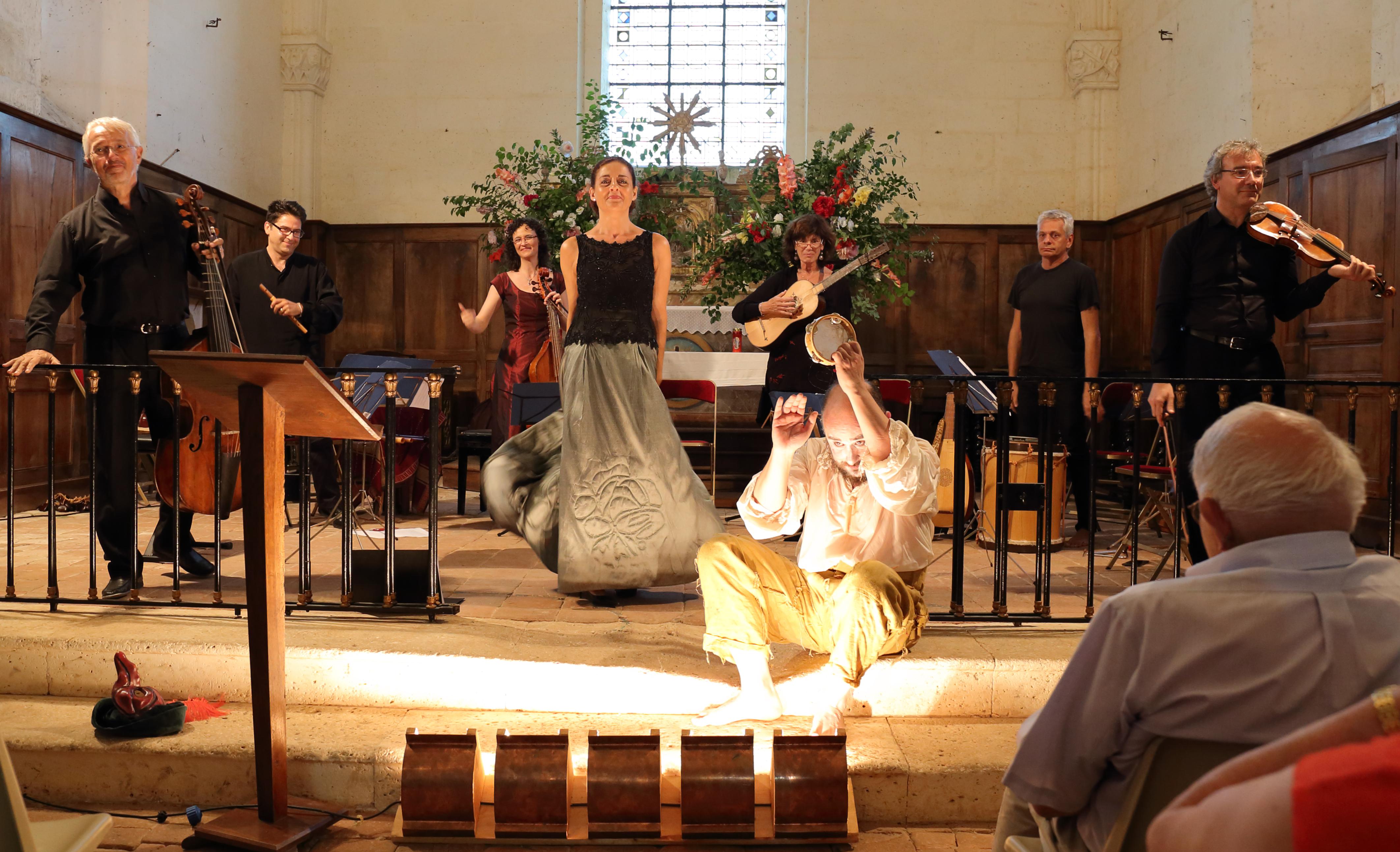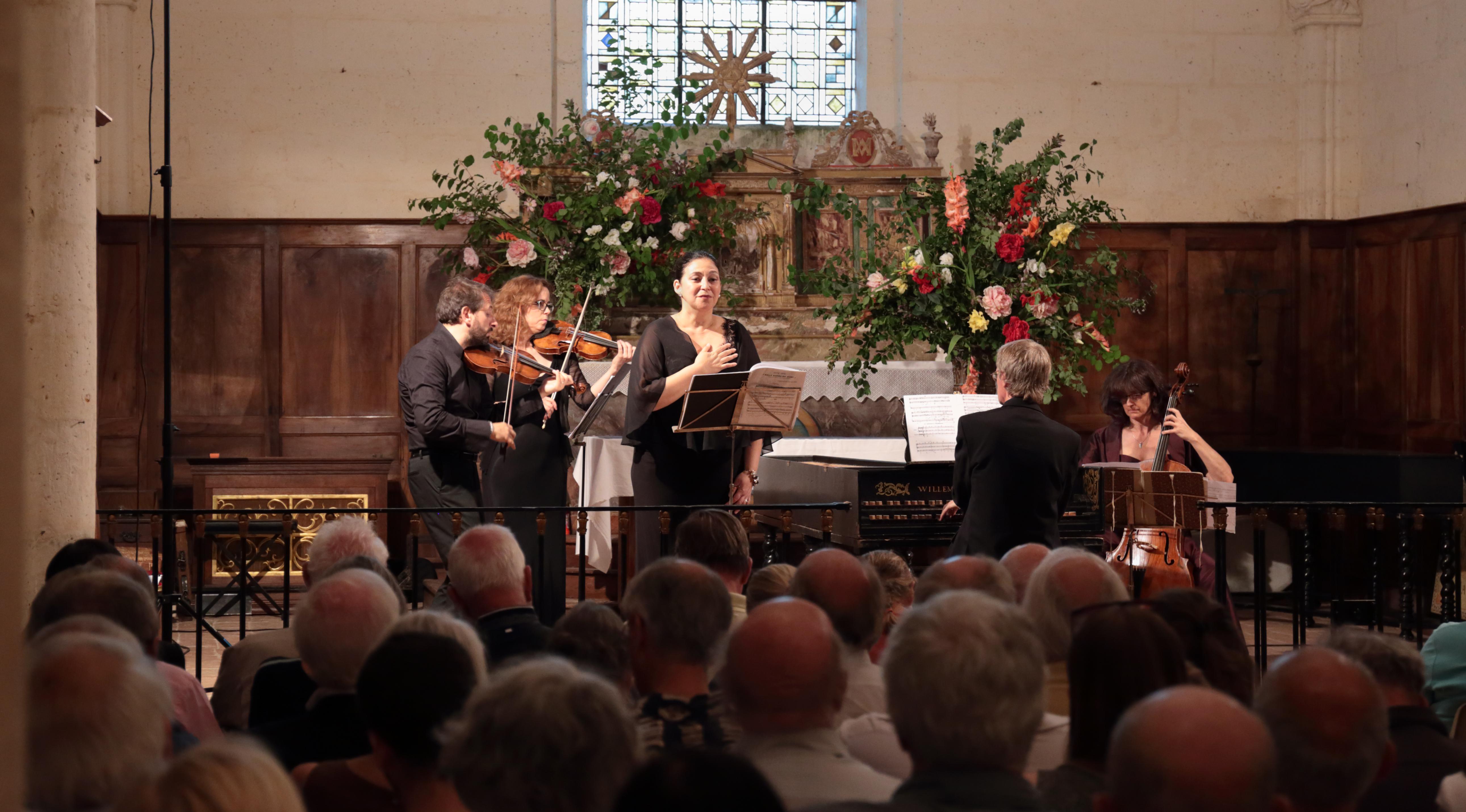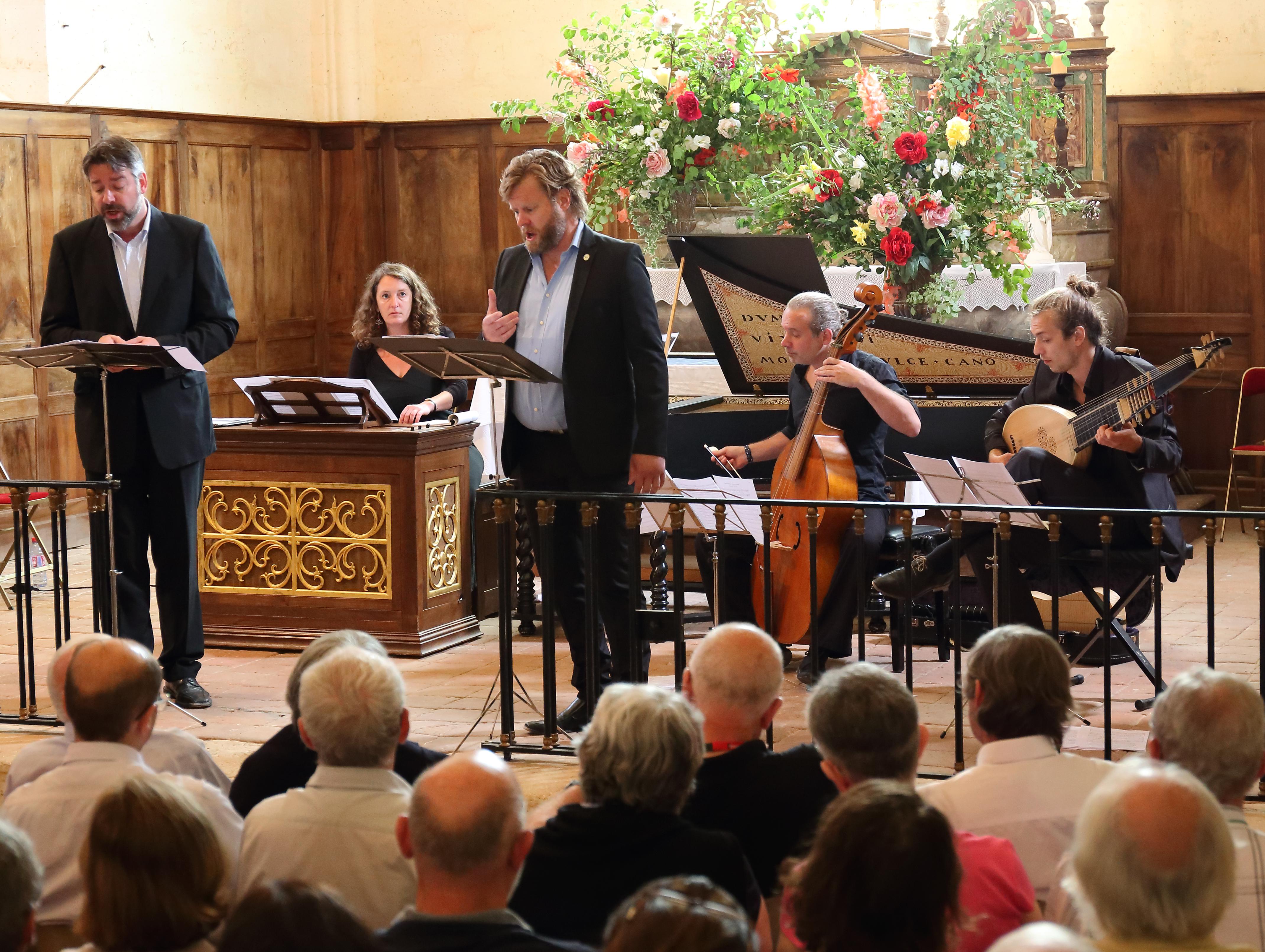D James Ross at a flourishing 2017 Lammermuir Festival
The Orlando Consort on Pilgrimage
My first concert at the Lammermuir Festival, in lovely East Lothian east of Edinburgh, was the first of two concerts on the theme of the Pilgrim’s Way, a performance by the Orlando Consort of music by Dufay and his contemporaries. The main work featured was appropriately Dufay’s setting of the Ordinary and part of the Propers for the Mass for St James. St James the Greater, the son of Zebedee, was buried in Compostela, and his cathedral there became an important focus for pilgrimage.
Looking back over the whole concert with its motets and chansons by Dufay and songs by Binchois (his close friend and colleague), Ockeghem, Compère and Jean Tapissier it was clear that the Mass was not part of the group’s standard repertoire, and there was unfortunately some distinctly dodgy intonation and a general lack of focus. This was a great pity as the Mass was probably the finest music in the programme – fortunately things settled down a lot in the second half. Particularly impressive were the virtuosic exchanges between alto Matthew Venner and tenor Mark Dobell. As many of the audience remarked, there was something intensely moving about the synchronicity of music and venue – the magnificent Parish Church of St Mary in Whitekirk in which we heard it dates from the same early decades of the 15th century. This beautiful building has an ideal acoustic for this music, and was packed for the occasion. Warm and protracted applause elicited an encore from a slightly later era, Antoine Brumel’s beautiful setting of Sicut lilium inter spinas. Tenor Angus Smith managed the most elegant segue into CD sales I have ever heard by pointing out that Medieval pilgrims liked to go home from pilgrimage with souvenirs, and that we could do the same! Neat.
A Flavour of Vienna with the Quatuor Mosaïques
A real feather in the cap for the Lammermuir Festival is a residency by one of the finest period ensembles in the world, the Quatuor Mosaïques, and their inaugural concert in the lovely neo-Romanesque St Baldred’s Church, North Berwick saw them presenting their core repertoire, quartets by Haydn and Mozart. Opening with the second of Haydn’s opus 20 quartets, they showed the master of the genre already confidently deploying the four instruments with flair and confidence, deftly ending his piece with an unexpected and impressive fugue. Sitting right in front of the performers, I felt involved in the group’s unique chemistry, and was very aware of the purity and immediacy of the vibrato-free timbre of their gut strings and period bowing – violinists Erich Höbarth and Andrea Bischof’s long sustained high notes seemed simply to hang inert in the air before re-engaging with the texture.
Haydn’s sixth opus 33 Quartet finds the composer already firmly established as the master of the genre, expressing himself characteristically and yet definitively through this new medium. The Quatuor demonstrated the supreme coordination and technical assurance that they have developed in thirty years of playing together, while their authentic set-up seemed to give us a direct line to eighteenth-century Vienna.
Listening to Mozart’s Dissonance Quartet K465 with which the Quatuor Mosaïques concluded this revelatory concert, it is hard to imagine the great difficulty the composer professed to have with the genre. The writing is so assured, the harmonies so daring, the textures so innovative that it seems to the innocent listener that Mozart must have enjoyed the same facility as he did in the other musical forms he attempted. The key to this enigma lies perhaps in the group’s encore, given in response to rapturous applause, which was an exquisite little Adagio rejected by Mozart from one of his early quartets – even the contents of the hyper-critical Mozart’s wastepaper basket are worthy of attention. At any rate the beguiling transparency of the Quatuor’s interpretation of the ‘Dissonance’ Quartet, and the unadorned almost raw immediacy of their sound brought us afresh to this wonderfully inventive music. Watching the group play live, one is made very aware of the emotional narrative in which they are all completely invested, one moment bubbling with hilarity, the next wrought with threat or even tragedy. A lifetime playing this music on the instruments of the time has given them an unparalleled perspective on this repertoire, which is why I have entrusted them with the job of being my guide through the Beethoven ‘Late’ Quartets – a body of six ‘problem’ works which I have never got the measure of. Excitingly, the group have just committed them all to disc over the last two years and they were available ‘pre-release’ at the concert. Naturally I invested, in anticipation of more revelations.
The venue for the Quatuor Mosaïques’ second concert was the remarkable arts and crafts style Chalmers Memorial Church in Port Seaton, a maritime church in the style of Pugin with various sea creatures stencilled on every available surface. The Quatuor started where they left off last time in the history of the quartet, opening with the effusive first Quartet of Mozart’s set dedicated to Haydn. Again assurance and invention shine through from first to last, and the Viennese ensemble seemed to have a natural affinity with Mozart at his most imaginative and positive.
Next came a genuine novelty and a nod in the direction of ‘Lammermoor’ with Gaetano Donizetti’s 17th String Quartet – who knew that the operatic composer had composed any string quartets, let alone eighteen?! This is music from Donizetti’s youth, and it turned out to be tuneful if rather formulaic, with occasional prescient forays into a more convincing operatic world, and some genuinely original passages in the Larghetto. Sadly, appearing in such august company, the work came across as rather passé for the 1820s, and even a little banal.
Back to the realm of genius, and the Fifth of Haydn’s opus 76 Quartets. These are works notable for their virtuosic and occasionally vertiginous first violin line, but this held few terrors for Erich Höbarth, whose deft bowing made literally light work of the challenges. This Fifth Quartet is the one whose Largo so captured the imagination of audiences that for a while it was known as the ‘Largo Quartet’, and it is easy to see why this lyrical movement, played with enormous intensity by the ensemble, appealed to such an extent. More so than hearing the group’s recording of the piece, I was made aware of some very odd almost haunting passages, such as the trio of the Minuetto. It would be a real mistake to regard Haydn as in any sense conventional, and the familiarity of the Quatuor Mosaïques with his music allows them to explore every unsuspected nuance. This was another stunning and revelatory master-class in quartet playing, rounded off, after tumultuous applause from another capacity audience, by a soothing Haydn encore. It was salutary to see that even these gods of the string quartet world are human, as they initially started out on two different encores simultaneously – I hope that this rare moment of discord can be edited out before the concert is broadcast on Radio 3 towards the end of November!
The Quatuor Mosaïques visited the charming Aberlady Parish church for their third and final concert for the Lammermuir Festival, ending as they began with Mozart and Haydn. They opened with the delightfully fresh opus 156 by the 16-year-old Mozart – in fact he had first tried his hand at quartet writing two years earlier at the age of fourteen! The set of six quartets written in 1772 and 1773, were composed in blithe innocence of the work of Haydn, and exude an uninhibited youthful confidence. Not without sophistication, they are nevertheless a long way from the later masterpieces, achieved according to their composer through much travail. The Quatuor and the audience delighted in the lightness of touch and effortless whimsy of the three-movement K156.
When the ensemble segued into Haydn’s opus 20 no 5 Quartet, we instantly felt the hand of experience. Written in the same year as the Mozart, the opus 20 Quartets were the product of a forty-year-old mind, and ‘Papa Haydn’, barely into middle age, was still subject to Sturm und Drang and youthful inventiveness, while the fugal tour de force finale of the Fifth Quartet seems brilliantly to be knitting the Baroque and Classical eras together. The Quatuor’s interpretation of this work was intensely powerful, bringing out its remarkable structural devices as well as its sheer élan.
The group concluded their residency by welcoming violist Alfonso Leal del Ojo on board for a performance of Mozart’s K515 String Quintet, which proved to be the highlight of the whole series. Dating from Mozart’s last years, the quintets are a vehicle for the composer’s most profound ideas, and most striking for me was the highly inventive way he used the additional instrument, permitting double imitation between the two violins and the two violas, also creating a faux mirror image of this between the two violas and the second viola and cello. Sometimes it was only the evidence of the eyes that confirmed that there were ‘only’ five instruments playing! It is no mean feat to slot into a quartet already playing at the top of their game, but Mr del Ojo was instantly part of the Mosaïques’ distinctive sound and dynamic. The thunderous applause which greeted this musical and performance tour de force reflected appreciation for the whole remarkable series of concerts. Bravi!
My appetite for the final Quatuor Mosaiques’ performance had been whetted by a memorable recital earlier in the day by cellist Alban Gerhardt in the most exquisite venue so far, the 14th-century Great Hall of Lennoxlove Castle. Against the backdrop of the spectacularly barrel-vaulted and acoustically stunning space, Gerhardt performed the first and last of Bach’s Cello Suites, overcoming finger cramps to deliver magisterial accounts on his full-voiced modern set-up cello. The most spectacular part of the recital for me, and I suspect for the rest of the audience, was his account of the Kodaly Sonata. In this wild music, snatched raw from the Hungarian Puszta and sounding untamed and belligerent, Gerhardt’s cello roared, danced, whispered and rhapsodised by turns. Intensified by the medieval stonework, the sound was magnificent and almost overwhelming. Being able to wander round iconic paintings of Mary, Queen of Scots, James VI, George Buchanan and other luminaries of Scottish history was just a special bonus.
Youth to the fore in minimal Mozart and contemporary polyphony
Although Mozart was only 18 when he composed his opera buffa La finta Giardiniera he was already an experienced operatic composer, and in the Lammermuir Festival performance at Brunton Venue 2 by Ryedale Festival Opera and the Orchestra of the Age of Enlightenment Experience Ensemble there was a similar synthesis of youth and expertise. The youth of the singers brought an authenticity to the fraught web of relationships in the plot, while their young voices along with the period instruments of the Ensemble lent the project the ultimate seal of authenticity. If inexperience led one or two of the singers occasionally to fight the rather dead acoustic, on the whole the voices were very pleasing both in solo, duet and ensemble contexts. It was in these latter sections, involving occasionally all seven voices in animated exchanges, that we could hear the seeds of the great operatic ensemble writing to come.
The performers had chosen to sing in English, using a new translation by John Warrack, which ranged between deft and funny modern-speak to frankly grammatically more clunking moments, which due to the libretto’s repetition kept coming back to haunt us. Notwithstanding the added accessibility, I think there is an undeniable case for leaving lighter works such as this robed in the beauty and dignified obscurity of Italian! It would be invidious to single out individual singers for praise, as the young cast demonstrated a consistently high level of vocal accomplishment and dramatic skills, genuinely involving the audience in what is a pretty preposterous story. Very simple staging, acted out in front of the minimal orchestral forces, added to the sense of spontaneity and made for a most enjoyable evening.
Youth was also very much to the fore as I resumed pilgrimage with a concert by Tenebrae in the magnificent ‘Lamp of Lothian’, the 14th-century Collegiate Church of St Mary’s in Haddington. The average age of the performers, already strikingly low, was further reduced by the participation of the National Youth Choir of Scotland Chamber Choir in a work specially commissioned this year by Tenebrae from Owain Park specifically to involve a variety of young vocal ensembles. Melded from a host of related texts and drawing on a wide range of musical styles, Park’s Footsteps had passages of luminous beauty, which stuck in the mind. Both vocal groups blended beautifully, a remarkable testimony to the Scottish choir’s founder and guru, Christopher Bell, who rightfully took his share of the applause.
The second part of the concert consisted of the virtuosic vocal masterpiece Path of Miracles by Joby Talbot celebrating the pilgrimage to Santiago in texts from the Mediaeval “Codex Calixtus” and the Latin liturgy as well as text by the librettist Robert Dickson. Tenebrae under their director Nigel Short have quite simply set new standards for the performance of unaccompanied choral polyphony, and their exquisitely precise and clear sound, maintained flawlessly for an hour, was instrumental in its accuracy and reliability and laser-like in its intensity. Talbot’s piece, bewilderingly eclectic in its musical influences, places huge demands on singers, each of whom is a soloist but also part of a larger blended whole, and this remarkable virtuoso ensemble rose magnificently to the challenge. Unfortunately, in the final sections of the work a whistling hearing aid in the audience clearly disturbed the singers and one or two of the audience, including me. As audiences age, this is a growing problem, and a very thorny one to address – naturally hearing aid users have the right fully to hear the music, but equally so do performers and other audience members.
As the singers moved portentously round the building, as if enacting some profound liturgical drama, it struck me that pieces like this, interweaving ancient liturgies, pilgrims’ song and world music, are creating new pseudo liturgies for our post-religious times – spiritual experiences facilitated without the inconvenience of faith or even belief. It is ironic that as church attendance and religious faith generally have declined, the public appetite for abstract spiritual experiences has rocketed, a fact underlined by the thunderous response to Tenebrae’s masterly performance.
Dunedin Consort provides a grand finale
The finale to the 2017 Lammermuir Festival was grand in every sense, being an impressive performance of Handel’s youthful oratorio Il trionfo del Tempo e del Disinganno, composed in 1707 during the 21-year-old’s Italian visit. Notwithstanding the rather conservative text in which stylised characters vie with one another, this early oratorio is not all it seems. In fact, the young Handel is warming up for his stellar career as an operatic composer, while the seemingly emblematic figures in fact interact like operatic characters. Already a gifted and experienced composer, Handel audibly delights in the forces at his disposal and is never musically more creative and imaginative than he is here. The sheer confidence of some of the musical ideas is stunning, while from the arch-recycler we also hear the roots of much later repertoire, including an almost perfectly formed prototype of the iconic ‘Lascia ch’io pianga’, given a ravishing performance by Emile Renard as Piacere, originally a role for male soprano. Renard also stunned us all with her virtuosic aria ‘Come nembo’, while fellow soprano, the crystal-toned Joanne Lunn, gave an exquisite account of the part of Bellezza. Nicholas Mulroy and Hilary Summers seemed perhaps less ideally vocally cast as Tempo and Disinganno, but gave heartfelt accounts of their generally darker music.
Equally impressive was the playing of the Dunedin Consort’s Baroque orchestra, from which emerged superb solo contributions by principal oboist Alexandra Bellamy, leader Cecilia Bernardini, organist Stephen Farr and principal cellist Alison McGillivray. Under the direction of John Butt, both the vocal and instrumental forces exuded Baroque expression, while wonderfully authentic and thrilling ornamentation provided the icing on the cake. This gala evening playing to a packed St Mary’s Collegiate Church Haddington picked up on several of the themes of this year’s Lammermuir Festival, not least the theme of youth which had run like a thread through the programme. Although it is so much more than this, the Lammermuir Festival has become one of the most important platforms for early music in Scotland or for that matter the UK. After a week of superlative international performances in lovely and atmospheric settings I can see why it has attracted such accolades and continues to enjoy such success. And perhaps the ultimate accolade – at the first concert I attended, the Orlando Consort’s Pilgrim’s Way, I spoke to a member of the audience about why she had come. She knew nothing of 15th-century polyphony, but said she ‘trusted the Festival’ and had been utterly beguiled by the synergy of music and venue. Surely this is what festivals should ultimately be all about!
Sincere and profound apologies to James, the festival and the artists for the long overdue uploading of this review; somehow it was filed and forgotten about.


